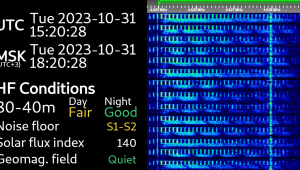Alas, Poor Plasma! We Viewed Him, Horatio

In other words, all good things must come to an end. More specifically, according to reports on Reuters and the Nikkei Business Daily, Panasonic will cease production of its display panels for plasma televisions in March 2014. (For now, no comment from Panasonic). Sources say Panasonic's last factory, the #2 Amagasaki plant, will be shuttered; perhaps it will be sold. The move would come not long after Fumio Ohtsubo, the chairman who pushed plasma, resigned in June. In any case, if reports are true, debates about the advantages of plasma aside, for Panasonic, plasma is over and done.
Panasonic’s plasma business has been struggling, but the move would take many by surprise and would occur sooner than many predicted. Panasonic has invested heavily in plasma manufacturing, and has continued to champion plasma while others have not. But finally, the handwriting appears to be on the screen. Reportedly, the writedown will be 40 billion yen ($413 million). It’s also worth noting that overall, Panasonic lost almost $1 billion in the TV business in 2012. The best that can be said is the 500 or so factory employees would hopefully be transferred to other Panasonic facilities.
The end of Japanese plasma would be the end of an era, in more ways than one. Beyond Panasonic’s woes, this is another sign of the eclipse of Japan’s once mighty TV industry. That industry, rising to prominence in the 70’s, formed the backbone of Japan’s juggernaut consumer electronics industry. Rival companies in the United States and Europe could not compete with the high quality and low cost of Japanese TVs. Now, it is Japan’s turn to feel the evolutionary sadness of a business model that has moved to other shores. Many “Japanese” televisions are manufactured in South Korea and China by other companies. Still in Japan are three LCD factories co-owned by Sharp, as well as a handful of assembly plants.
And, there is an even bigger picture to consider. For the first time in a decade, worldwide TV sales fell in 2012, down about 6%. Part of this is expected: the switchover from CRT to flat panel has been largely completed, and slowdown from saturation is inevitable. Another factor, perhaps more ominous, is that more and more people are watching smaller and small screens; the TV business may be in long-term trouble. It remains to be seen whether new technology such as 4K and curved screens can resurrect the consumer excitement.
And so you have it. Hamlet. Act 5, Scene 1. Fade to Black.
- Log in or register to post comments


I'm not ready to get a new TV yet, my 6 year old Pioneer still looks great and I'm not wanting to replace it or go to the trouble of trying to sell it just to cross grade to something that's simply newer and a bit larger.
I hope Panasonic hangs in there a bit longer so current plasma owners needing to replace there failing sets can do so...at least until OLED is viably priced.

With a company as large as Panasonic, I can't imagine them abandoning the technology that is considered the best for video quality by all the major consumer reviewers. Now that they have the ZT series displays, which finally surpass Pioneer's Kuro in performance, producing this one model would be worth the lost yen in worldwide advertisement value. If they stopped wasting money trying to sell lower grade plasmas, every TV station and videophile in the world would necessarily have to own "the reference" monitor regardless of the price point. Their LCD's still look better than the other brands, so the video ignorant can still be happy.

Just bought my first TV and went with a 50 inch LED/LCD set. Oh I read up on all the specs and what the various video gurus were saying about plasma. I visited many stores and spent literally weeks comparing the pros/cons of plasma sets along with the LED/LCD sets in the same price range.
Based on all that I had researched, I was supposed to be "blown away" by plasma's deeper blacks, wider viewing angle, etc. etc. But no! After all was said and done I bought myself a Toshiba LED/LCD set. In my estimation, it's picture ranks right up there with the plasma sets in the same price range. Not only that but most plasmas have a more reflective (glossier) screen that I find annoying. I'm sure plasma sets are great. But I'm extremely satisfied with my LED/LCD set purchase!

Many folks are happy with a Kia - make a good car but some folks want a Mercedes Benx makes a better car - this is why you can spend $50.00 for speakers or $10,000.00 for speakers - most folks buy by price and a $500 HDTV can give you a good picture - a $3,000 Panasonic plasma gives to a better picture - is it worth an extra $2,500? Is $30,000 more for a Mercedes Benz worth it - both cars get you from point A to point B and many folks will say the Kia is as good as the Benz. Which was better, VHS or Betamax video tape? Marketing my friend it's called marketing!

I felt compelled to reply to your post as it's completely wrong.
When you compare plasmas to a Mercedes Benz you're talking a bout the high end sets. Panasonic offered a mid level line the ST60 series ( the 60" is reviewed on this site ) that was extremely competitive. I bought the 55" inch back in July and am very satisfied as it's the best set I've ever owned. Besides a stunning picture it is loaded with features ( 3D, internet apps, etc. ). To get this picture quality with all of these features in a LED you'd have to pay thousands. I paid $1349.00 and the price is even less now. This set was picked as the editor's choice on CNET also best value on Consumer Reports. It also rivaled their high end sets costing thousands more. So your analogy is flawed as it doesn't really depict the situation. Plasmas were a great value. But if someone wants to pay Mercedes Benz prices for the same in a LED then you have the true picture. Also I might add the reviews initially found fault with the 3D performance of this set. Since then the firmware up dates have fixed that and now the 3D is quite good. But people believe that LED is better because some say so and it has a brighter picture ( not a more accurate one ). It's called " Marketing ".

































































